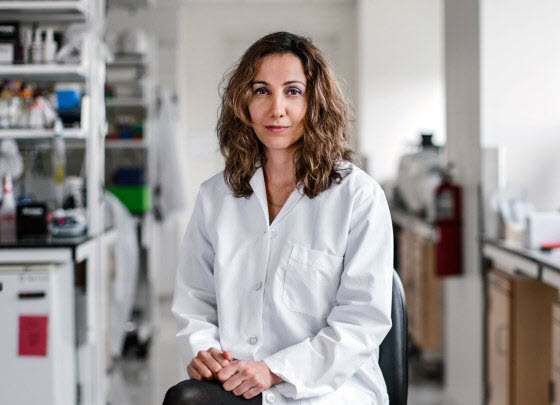December 26-2014

Dr. Pardis Sabeti of Harvard was one of 22 people named by Time magazine last week as it chose “The Ebola Fighters” as its Person of the Year for 2014.
Sabeti, 38, came to the United States as a child when her family fled the revolution. Her father, Parviz, had spent his career with SAVAK, the Shah’s intelligence service, and was its Number Four ranking official when the revolution rolled over Iran.
His daughter chose science and now directs a 22-person staff at Harvard that has pioneered in a computational approach to the study of evolution and public health issues.
Evolution isn’t just about monkeys in the family tree. More importantly, it is about how our predecessors over the last several thousand years adapted as new diseases evolved and attacked the human species. That is where Sabeti has focused her work, and this is what brought her into the Ebola fight.
Last March, she and her team were presented with boxes of blood in vials, fresh from patients in West Africa. By sequencing the genome of each virus sample, Sabeti and her team were able to track small mutations in the virus from one patient to the next.
This work proved highly valuable because it ruled out the possibility that the disease was being spread through repeated contact with infected animals. Instead, it was moving from person to person. That told the Ebola fighters in West Africa to forget about animals and concentrate on keeping people with Ebola from having contact with other people.
Outside the lab, Pardis is the bass player and lead vocalist for the indie rock band Thousand Days, which plays gigs around the Boston area. The band has released four albums so far. It isn’t a threat to the Rolling Stones, but it has received an honorable mention in a Billboard magazine World Song Competition. Another album is in the works but has been postponed by the time demands of her Ebola work.
Pardis married in September 2012. Her husband is John Rinn, an assistant professor of stem cell and regenerative biology at Harvard. Where Sabeti goes in for rock music for a change of pace, Rinn is an enthusiastic snowboarder who once considered going pro.
Pardis was born in Tehran in 1975 and was just a toddler when the revolution began to roll in 1978. The family settled in Florida, where Pardis started setting records in school at an early age.
She was a National Merit Scholar in high school and went to MIT where she had a perfect 5.0 grade point average. On graduating, she won a Rhodes Scholarship and went off to the University of Oxford to pursue research on human genetic resistance to malaria.
Sabeti is best recognized in the world of science for developing a computational method for detecting segments of the genome that are worth studying further. If a gene is helping to do great good—like saving people from cholera—it will tend to be selected in succeeding generations. Those without the gene will die in large numbers, while those with it proliferate. It can take dozens of generations to see the patterns emerge.
Mutations that help people survive will proliferate quickly. Sabeti’s computational system looks for those that proliferate quickly as well as for those that are rare in most parts of the world but common in those parts of the world that are ravaged by a particular disease.
Pardis told Time she and her colleagues had long suspected Ebola could be circulating in West Africa. “One of the many reasons we thought that could be the case was that often we see Ebola cases centered where there are a lot of chimp populations. One of the only places where there were chimps that didn’t have Ebola at that point was West Africa. We considered the possibility that the virus could have been circulating undetected in populations for many years, misdiagnosed as other diseases that look similar, like malaria or typhoid fever.”
She said that when her team saw alerts about Ebola cases in Guinea last March, “everybody agreed we needed to move.”
She said, “The genome sequencing that we do is so critical to the development of diagnostics, treatments and vaccines. The diagnostic that is needed to even confirm Ebola is only possible because we know the genome sequence of the virus.”
Sabeti said her team’s research uncovered many things, “including that there is a lot of genetic similarity between the viruses we sequenced and those from Guinea early on in the outbreak, suggesting that the epidemic started with a single transmission into the human population from a natural reservoir such as an animal, and there weren’t multiple transmissions but a continuous set of human-to-human events that started this outbreak.
“That’s important in how we thought about the response, in the sense that what people really need to be doing is reducing contact between themselves—because it wasn’t being spread widely by animals or contact with animals,” Sabeti explained.






















